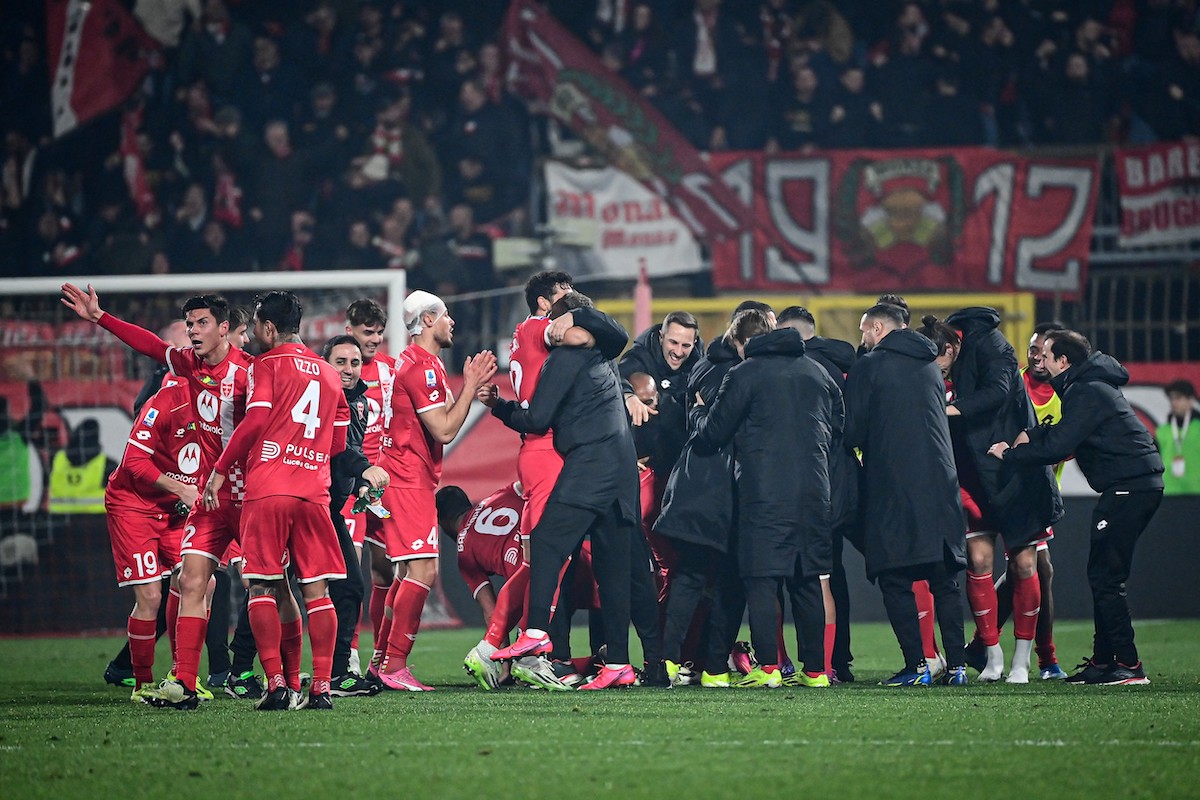AC Milan made it four Serie A wins in a row on Saturday night as they beat newly-promoted Monza 4-1 at San Siro in a game that marked the return of Silvio Berlusconi and Adriano Galliani.
It was the Brahim Diaz show in the first 45 minutes as he scored after a brilliant solo run and registered a brace with an excellent touch and low shot, though he would go off injured in the second half.
The third goal was Divock Origi’s first for the club – a thumping effort into the top corner – and though Monza pulled one back through a Filippo Ranocchia free-kick, a fourth from Rafael Leao put the game to bed.
Below is a tactical analysis of the game…
Brahim’s brace
One of the prime things that Ariggo Sacchi focused on while instilling his pressing game is that his teams need to be compact and the difference between the first and last line of defence shouldn’t be more than 15 metres.

Monza in their build-up violated this sacred rule of Sacchi by having a big gap between the last line of defence and the middle line, which helped Diaz to drop in between the midfield and defence and Tatarusanu to pick him out.
This was mostly done because Monza’s defenders are not the greatest in terms of recovery pace and we have seen how explosive Rebic and Origi can be.
Once Monza were a goal down they had to push up in search of an equaliser. They tried to pin Milan to the touchline of whichever wing the ball was in play and the defenders unlike the first goal they pushed up to squeeze the gap between the lines.
This time Origi used his pace to beat Caldirola and pick out Brahim Diaz who occupied the space between the centre-back and left centre-back in Monza’s 3-4-2-1

Getting in on the act
One of the biggest risks of playing a three at the back is that if not structured properly the formation’s biggest strength (defensive cover) can be the biggest weakness too.
Centre-backs are not always the most agile and pitting them against wingers can be a real test of their 1v1 ability. So when Milan switched it from the left wing to the right wing, it put Messias on a 1v1 against Carboni.
While Messias got the better of Carboni it meant that there was a huge gap in the half spaces between the LCB and the CB which Origi occupied before he unleashed his shot.

The data
Despite the main numbers reading four goals to one in favour of the Rossoneri, there was some data that is not as promising and highlights that the team are finding it difficult to maintain the intensity we are used to.
Pressing: A metric used to measure pressing is PPDA (Passes Per Defensive Action). It measures how many passes an opponent makes before Milan make a defensive action (tackle, interception etc.), so the lower the PPDA number the better.
Milan’s PPDA was 11.1 which compared to last season’s PPDA of 8.86 is a clear indication of how weak Milan’s pressing against Monza was. Even further evidence showed that Milan only covered close to a 105km against Monza. Perhaps the fatigue has become a big factor with the extra tight schedule.

Statistics give us a fair view of the game but Milan vs. Monza was a different match. Milan’s xG (1.31) against Monza’s (1.47) showed how Milan vastly over-performed despite not creating clear cut chances.
For example, Brahim Diaz’s second goal only carried an xG of 0.10 but Milan scored four goals against an expected goal of 1.3. This is a good and bad sign: Milan over-performing on the expected shows good individual quality, but it shows they need to be creating more chances too.

Conclusion
The main thing heading into such a potential banana skin home game is to secure the three points by whatever means necessary, especially with crucial Champions League commitments coming up, and scoring four times to earn three points was a positive.
Brahim Diaz looked electric before his injury and Divock Origi offered something very different to Olivier Giroud with his mobility and willingness to drop into wide areas. Monza had conceded one goal in four games in the league heading into their trip to San Siro, so we must emphasise the positives.





